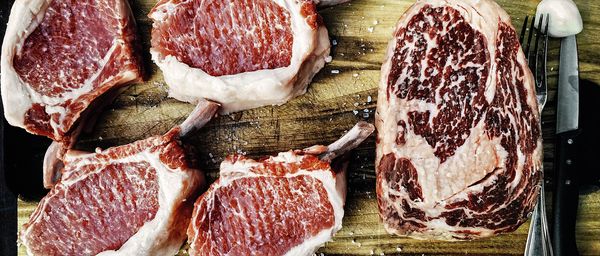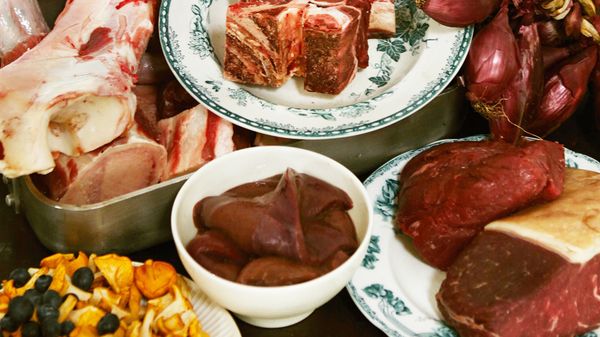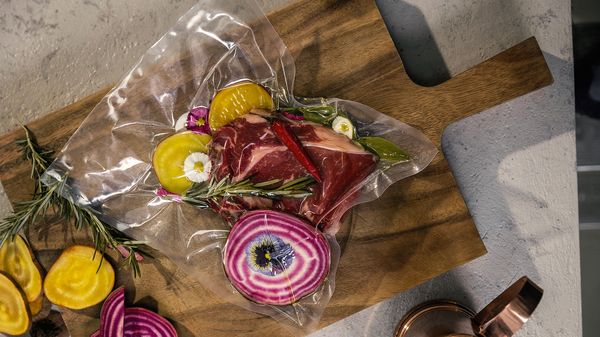
DRY-AGING IS THE OLDEST AND MOST POPULAR FORM OF PREPARING MEAT. SOMMELIER AND MASTER BUTCHER DIRK LUDWIG EXPLAINS WHAT HAPPENS IN THE PROCESS.
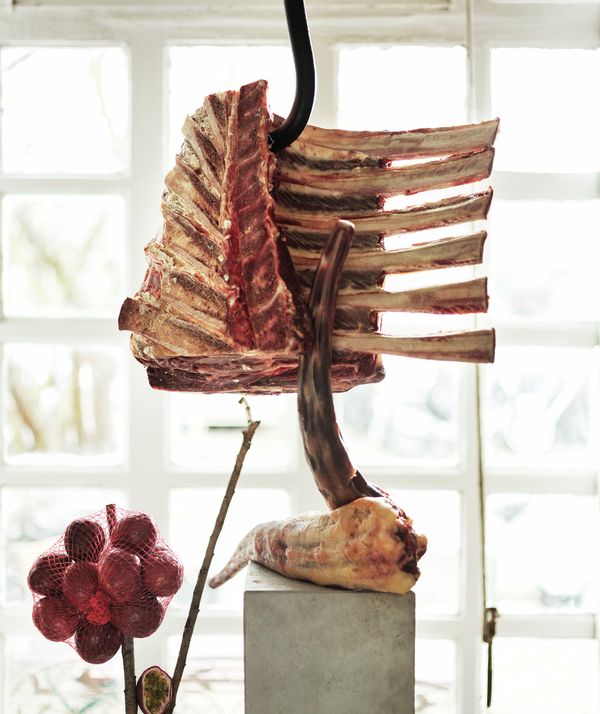
Orders from the world's top chefs
Not infrequently, Dirk Ludwig gets orders from some of the world’s top chefs for his matured entrecôtes. Real meat fanatics make the journey to him for seminars, getting misty-eyed when they talk about the musky, nutty aromas and unique tenderness of his dry-aged steaks. There’s no two ways about it: this master butcher from the small German town of Schlüchtern has a reputation that crosses borders. We talked to him about how he matures meat.
Dry-aging isn’t a new technique. Why has it been hyped so much recently?
Maturing meat by hanging is one of the oldest ways of storing it, but the development of vacuum-maturing led to the disappearance of this method. Some things need to die a death before people realise their value.
Which parts of cows – or indeed pigs – are suited to dry-aging?
Dry-aging works best with big pieces of meat with a good proportion of fat. A rib-eye steak is easier to mature by hanging than a fillet because its thick layer of fat stops it from drying out. After the aging process, we often need to pare off the exterior of the meat to remove desiccated or fungal material, so maturing single pieces of lean meat or a lone steak can lead to there being very little left over after preparation.
You also age meat in mineral water. Why?
In terms of kitchen chemistry, it’s often acid that is responsible for tenderising meat. That’s why some old recipes such as German Sauerbraten – “sour roast” – call for meat to be soaked in vinegar, or why meat is marinated in wine, even milk. And since mineral water has carbonic acid, I thought I’d try it. With a high concentration of carbonic acid, the meat is given just the right supply of minerals and trace elements; these are what give it its tender texture and its slightly tonic taste.
I’d guess that this hasn’t satiated your interest in experimenting, though, has it?
We’ve even tried using champagne and coconut water, too; but we only use results that actually represent an improvement. We’ve still got a few temperatures to try out: changing the temperature is an exciting proposition because the enzyme which actually does the bulk of the “aging” is more active at higher temperatures. It ́s a balancing act. We generally tend to use low-temperature methods. Dry-aged porterhouse steaks, côte de boeuf ribs and t-bones are at their best medium rare, which means going for a core temperature of 52 to 57°C.
What do you like to eat with a dry-aged steak?
As little as possible: it’s about experiencing the fantastic range of flavours in the meat. After all, rather than having piles of ingredients competing for attention. Quality salt and pepper are the best ways of enhancing a steak once it’s been cooked. Add a fresh green salad and some slices of good sourdough bread and, if you ask me, it doesn’t get any better.
What is the ”caveman method“ all about?
When barbecuing, people usually try to keep meat away from ash. Some Americans use this so called “caveman method“ where the ash gets onto the meat. That’s when steak aficionados first found out that the aromas of ash add an exciting note to the meat. We recently tried out our first ash carpaccio. It’s very tender, very juicy and slightly smoky. The ash gives the meat a gentle seasoning, so you get an aroma which avoids the slightly cheesy, sometimes plain smelly note that can come with dry-aged cuts which have been matured a bit too long.
Humidity 70%
Dry-aging beef is a time-consuming process. At Ludwig’s butchery, the sirloin is hung in a specially controlled salt-crystalroom kept at 1°c and 70% humidity to mature for several weeks. As it ages, the meat shrinks by around 30% from its original mass, and this loss in liquids leads to more concentrated flavours. This long process comes at a price, though: dry-aged rib-eye steaks or roasting joints cost upwards of €70 a kilo. A fillet won’t go for under €90 per kilo.
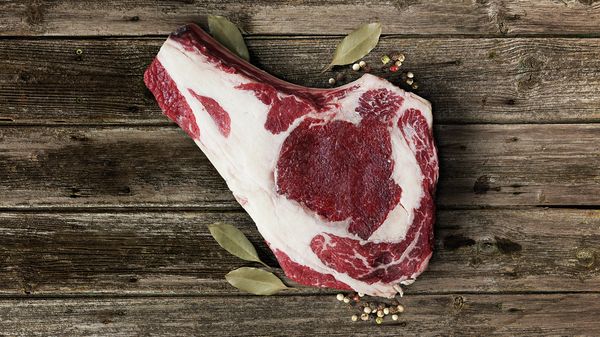
Ready for graduation
7 DAYS: From slaughter onwards, the meat is cut off from blood and oxygen supplies.
21 DAYS: The meat is now 10% lighter as water trickles from the front to the rear side of the meat.
30 DAYS: Enzymes are released. They start to break up the muscle fibre structures and tenderise the meat.
45 DAYS: The meat has taken on a darker colour and amino acids have created a range of aromas.
90 DAYS: The surface shows white streaks while the edge of the cut has developed a hard, salty crust.
